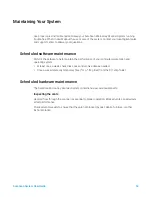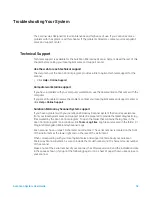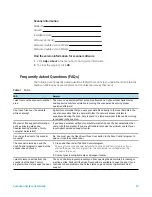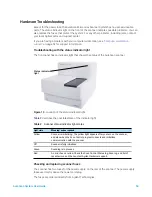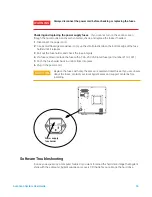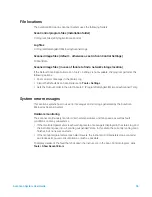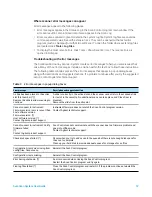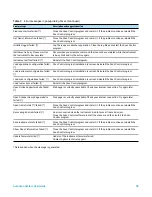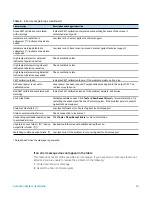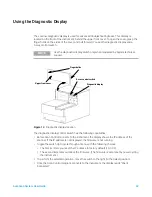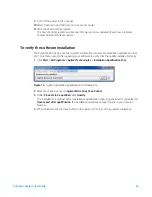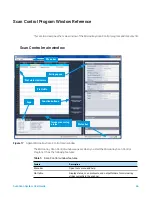
SureScan System User Guide
51
Tips to prevent problems
Follow these tips to help you maintain the SureScan Microarray Scanner System and its
performance.
Tips to avoid data loss
•
Avoid running software programs that cause high CPU workload, that can affect the
acquisition of data during scanning.
Tips to avoid damage to the scanner
•
Keep liquids and vapors away from the scanner.
•
Never place anything on the scanner or on the scanner door.
•
Minimize and control temperature fluctuations.
Do not place the scanner in direct sunlight. Do not locate the scanner near windows even if
they have blinds or window coverings. The hot sun can heat up the scanner housing in a
nonuniform fashion, which can cause problems with the alignment of the optics.
Scan only when the laboratory temperature is consistent with the operating temperature
specifications for the scanner. To assure optimal scanner performance, operate the scanner
only in the specified temperature ranges. (See
“SureScan Scanner Specifications”
•
Control the humidity.
The scanner is sensitive to condensing humidity conditions. To ensure optimal performance,
operate the scanner only in the specified humidity ranges. (See
on page 89.) Always allow 12 hours thermal equilibration time on site before
opening the shipping box.
•
If the power cord needs to be replaced, use a power cord that is appropriately rated.
Tips to maintain hardware performance
•
Avoid moving the scanner.
If you must move the scanner, there is a chance for adverse affects on performance. Call your
local Agilent sales and support center for assistance in moving the scanner.
•
Place the scanner on a sturdy lab bench or table.
•
Avoid leaning on the scanner.
•
To extend the life of the lasers, set up your lasers to turn on and off automatically. See
•
After turn-on, allow time for laser warm-up and stabilization. Typical warm-up time is less than
five minutes.
•
Do not use acetone or other solvents for cleaning.
WARNING
Do not remove the main cover. Do not attempt to repair or gain access to
internal components. You risk exposure to high voltage and harmful laser
radiation.














